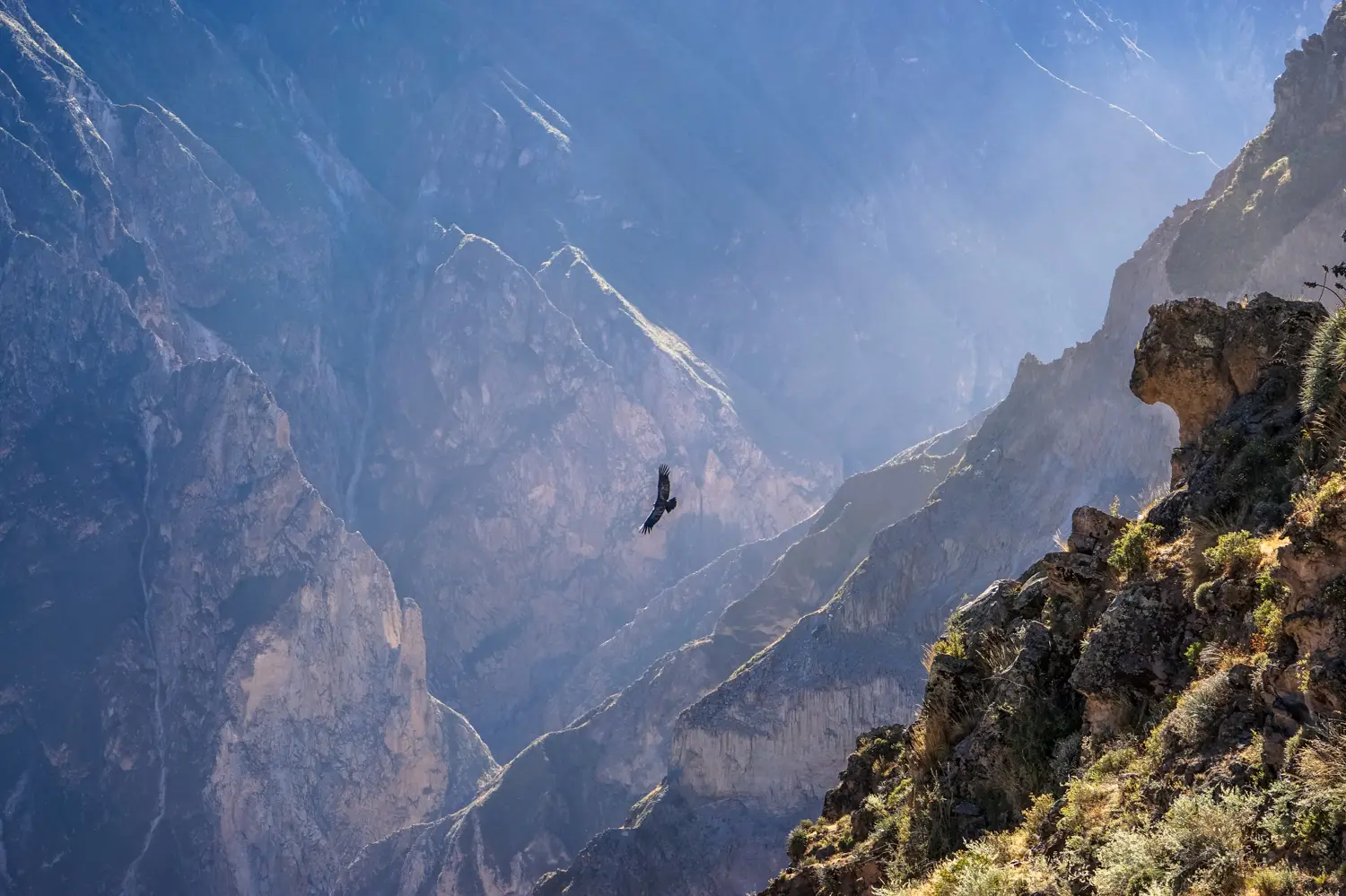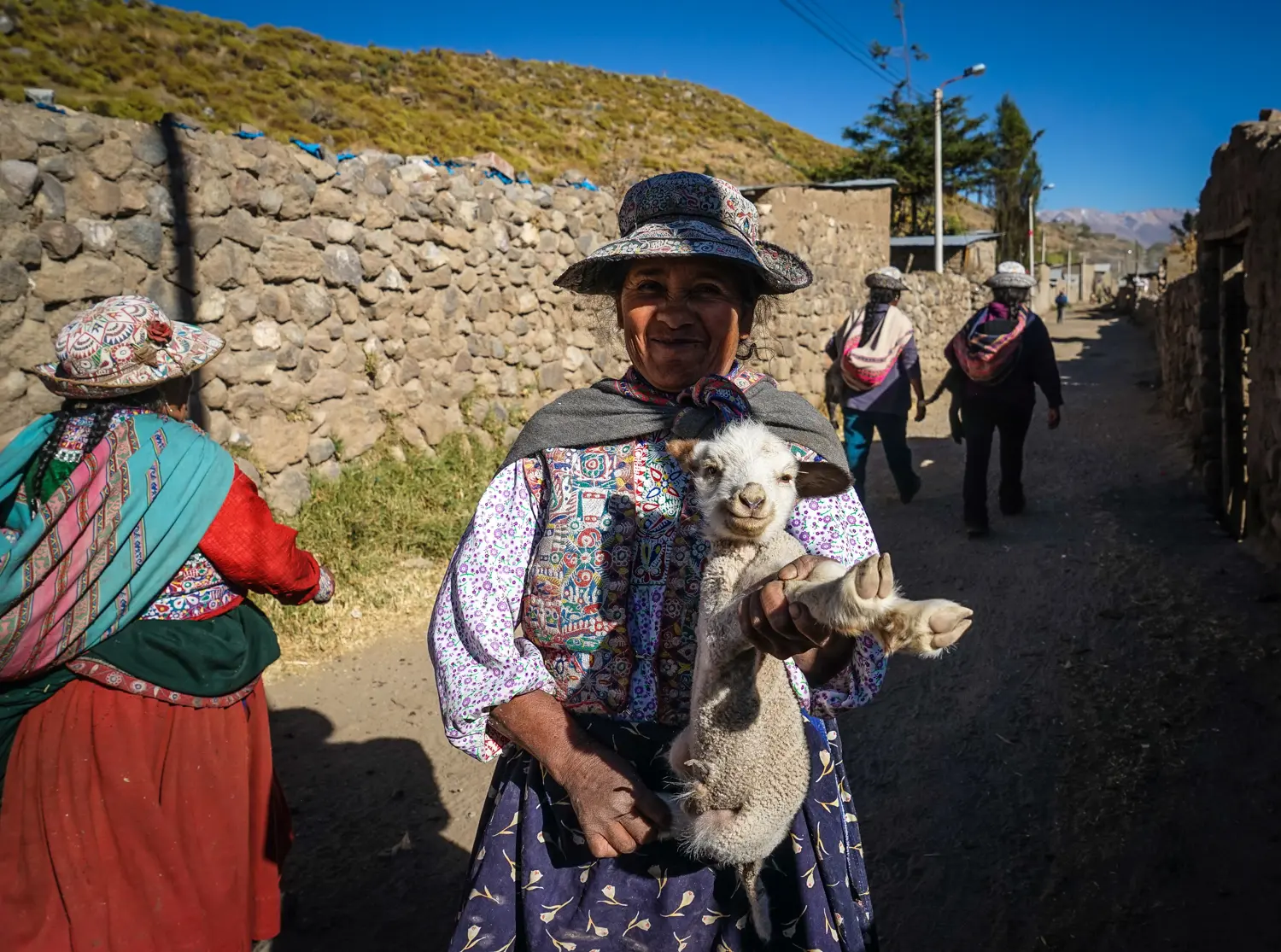Peru is a fantastic destination for all types of travelers, even the first-timers. The country boasts excellent food, friendly locals, relative safety (for South America at least), world-class nature. And did I mention the man-made monuments such as Machu Picchu, one of the most famous sites anywhere in the world? Millions of visitors flock each year to Cuzco, the ancient Inca capital, to see its ancient and colonial delights and all the nearby market towns.
On their rush to Cuzco, many visitors overlook Arequipa, which is a very fun and interesting city by itself. That is a mistake. Not only it offers all of Peru’s marvels, it is also the gateway to one of Peru’s most significant natural sights – Canyon de Colca.

Colca Canyon offers something few other places in the Andes do: spectacular hikes that are safe and non-extreme, and on your own without the need to carry much. If you are heading that way (which I recommend you do), this is your lucky day. Here is how Colca is “done”.
Book from any agency a 30 sol tourist transportation from Arequipa that leaves at 3 am. I know, that’s brutal, but you need it unless you want to go there the night before, and spend 6 hours of day time on the trip. Note: DO NOT book any guided tour that takes you on a standard gringo route (which is most of them). You don’t need a guide, unless you are physically unfit or are scared to walk alone or with a friend, in which case you should ignore this review. On the tourist bus, try to catch some sleep if you can while it’s still dark.
They will stop for breakfast at some ungodly early hour in a freezing town of Chivay. You’re likely to be seated with dozens of so-called backpackers who signed up for the tour. Never mind that, enjoy your breakfast and then rejoin your ride. The reason you have booked the tourist bus and not a public bus is the stop at the Condor Cross. Yes, the birds should be there and are simply majestic. The scenery behind the window by that point is already breathtaking.

Shortly after the Condor Cross, your group will disembark, and it’s now your time to start walking free. The groups are slow-poking about with their guides, and yes, you will see lots of them. But you are walking independently, which will allow you to set the places for sleeping and walking times as you wish. On the bus, by the way, they will collect the rather exorbitant 70 soles entrance fee.
Familiarize yourself with the canyon from the high point near the bus drop-off. You will see there is simply no way to get lost there. Zero chance. You see all the villages as if they are on your map. Head down first, to the bridge, like everybody else, and enjoy the scenery.
About 20 minutes after the bridge, which should be around noon-1pm time frame, you will come to the village of San Juan de Chucchu. Eat lunch here, buy water if needed. Again, the village caters mostly to the tour groups, but will happily accommodate you.
Now this is where you split from the masses. Instead of going to the so-called Oasis or sleeping here in broad daylight, you have plenty of time to explore the non-touristy villages in the Canyon. First, hike up to Tapay, a pretty village above San Juan. It’s about 2 relatively strenuous hours. You can stay here overnight, if you wish; however, I recommend descending from Tapay to either Cosnirwa or Malata for the night. Both are pretty villages, too, and both have accommodation options. All of them offer cooked set menu food and beer as well.
The next morning, try to leave before 10 am to start your trip to Llahuar. This is my best tip to you: skip the gringo Oasis with its tepid swimming pools. What you want at the end of your trek is some real hot springs, no matter how hot it will be during the day. You’ll thank me later.
The walk to Llahuar takes around 4-5 hours. Don’t listen to the locals who say it’s only 3. You will mostly follow the gravel road (with very little traffic), while the views are still breathtaking. There are some short cuts available, but ultimately, you can’t do wrong by following the road.
When you get to Llahuar, it’s not even a village: a picturesque hostel perched on the side of the canyon. The hot springs are down below, and trust me, when the sun starts going down, you will love the 40 degree warm water, surrounded by the spectacular rocks. The Colca river is right nearby, so you can jump into its freezing waters and then back to the hot pool.

The next morning, you have 2 options to get back up to Cobanaconde: walk for at least 4 hours, or take a 5 am minibus that shuttles locals to town. That’s a good option, which is not available from Oasis, if you want to head back to Arequipa quickly. If you catch the 7 am bus, you can be in Arequipa by about 1-2 pm. Or, linger around the Canyon a bit more – stop by at Chivay, do some ziplining, or horse riding, or whatever you prefer.
And that, my friends, is how Canyon de Colca is “done”. Have fun!
